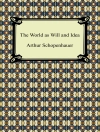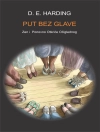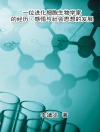Though best known for his superlative poetry and plays, Johann Wolfgang von Goethe (1749-1832) also produced a sizable body of scientific work that focused on such diverse topics as plants, color, clouds, weather, and geology. Goethe’s way of science is highly unusual because it seeks to draw together the intuitive awareness of art with the rigorous observation and thinking of science. Written by major scholars and practitioners of Goethean science today, this book considers the philosophical foundations of Goethe’s approach and applies the method to the real world of nature, including studies of plants, animals, and the movement of water.
Part I discusses the philosophical foundations of the approach and clarifies its epistemology and methodology; Part II applies the method to the real world of nature; and Part III examines the future of Goethean science and emphasizes its great value for better understanding and caring for the natural environment.
Daftar Isi
List of Figures
Preface
Goethe, Nature, and Phenomenology: An Introduction
David Seamon
1. Goethe and the Science of His Time: An Historical Introduction
Arthur Zajonc
PART I. GOETHEAN SCIENCE: PHILOSOPHICAL FOUNDATIONS
2. The Metamorphosis of the Scientist
Frederick Amrine
3. Goethean Science
Walter Heitler
4. Goethe, Science, and Sensory Experience
Herbert Hensel
5. The Idea in Nature: Rereading Goethe’s Organics
Ronald H. Brady
PART II. DOING GOETHEAN SCIENCE
6. Transformations in the Foliage Leaves of the Higher Plants
Jochen Bockemühl
7. The Unity of Science and Art: Goethean Phenomenology as a New Ecological Discipline
Nigel Hoffmann
8. Horns, Hooves, Spots, and Stripes: Form and Pattern in Mammals
Mark Riegner
9. Seeing the Animal Whole: The Example of the Horse and Lion
Craig Holdrege
10. Flowforms and the Language of Water
Mark Riegner and John Wilkes
PART III. THE FUTURE OF GOETHEAN SCIENCE
11. The Resurrection of Thinking and the Redemption of Faust: Goethe’s New Scientific Attitude
Alan P. Cottrell
12. Counterfeit and Authentic Wholes: Finding a Means for Dwelling in Nature
Henri Bortoft
13. Light and Cognition: Goethean Studies as a Science of the Future
Arthur Zajonc
Contributors
Index
Tentang Penulis
David Seamon is Professor of Architecture at Kansas State University. He is the editor of several books, including most recently
Dwelling, Seeing, and Designing (SUNY Press) and
Dwelling, Place, and Environment, and is the author of
A Geography of the Lifeworld.
Arthur Zajonc is Professor of Physics at Amherst College and has lectured widely on quantum physics. He is the author of
Catching the Light: The Entwined History of Light and Mind and coauthor, with George Greenstein, of
The Quantum Challenge: Modern Research on the Foundations of Quantum Mechanics.












